The ongoing ecological disaster has been “temporarily controlled” in Porter Ranch, California, an affluent Los Angeles suburb. Yet, families continue to get sick, and SoCalGas/Sempra wants to oversee the testing inside of homes. While the Regional Air Quality regulators requested they close the leaking well down, the AQMD failed to listen to community demands for a permanent shut down of Aliso Canyon Storage Facility.
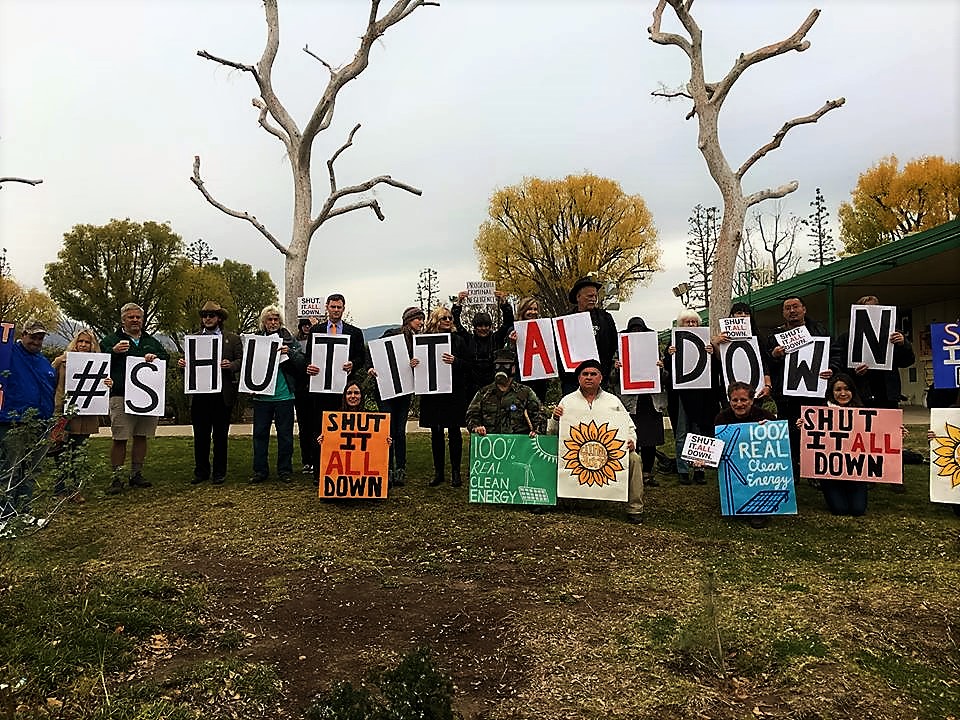

SoCalGas Ordered To Permanently Close Leaking Gas Well, But Leave the Facility Operating
As the gas blowout at Southern California Gas Aliso Canyon Storage Facility continued to spew noxious methane, the South Coast Air Quality Management District Hearing Board issued a decision that failed to adequately protect residents of the surrounding communities. After three weeks of hearings and deliberation, AQMD issued a Stipulated Order for Abatement, but residents and local elected officials say the order, which does not require the permanent closure of the Aliso Canyon Storage Facility, falls short of what’s necessary to protect public health. The order also appears to contradict Governor Jerry Brown’s Executive Order to protect public safety.
Gov. Brown’s order, issued January 6, requires state agencies to protect public safety and stop the leak by finding alternate supplies for natural gas and electricity; it also requires SoCalGas to maximize daily withdrawals of gas and to abide by a moratorium on gas injections in the Aliso Canyon Storage Facility.
SoCalGas said February 11 it had temporarily stopped a months-long natural gas leak in Aliso Canyon that had forced residents of Porter Ranch and other communities to leave their homes amid complaints of headaches and other health problems. But what about the remaining wellheads set about the many acres of the storage facility that await inspection, repair/or shutdown and sealing? We must shut it all down.
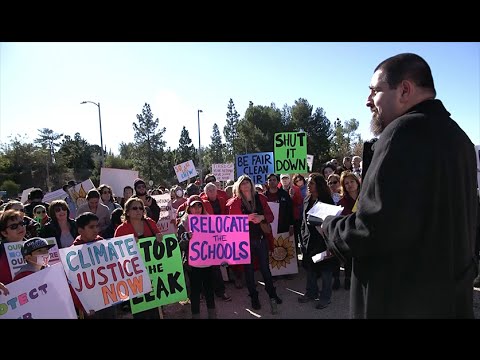
Watch this video on YouTube
Blowout: Porter Ranch Leak Demands Gov. Brown Action – Food & Water Watch
The main ingredient of natural gas is methane, a greenhouse gas which traps up to 84 times more heat over 20 years than CO2. Since the beginning of the disaster, the leak has released about 95,000 tons of methane into the atmosphere, which according to the Environmental Defense Fund would have the same 20-year climate impact as burning almost a billion gallons of gasoline. At its height, the leak more than doubled the methane emissions of the entire Los Angeles Basin and surpassed what is released by all industrial activity in the state.
“Hydraulic fracturing facilitates about a third of the subsurface storage of natural gas in the state,” and is especially common in Aliso Canyon, the California Council on Science and Technology report says. Operators frack storage wells to increase gas production, which decreases by about 5 percent a year, according to a U.S. Department of Energy report.” — Maya Golden-Krasner, Sacramento Bee
Thousands of residents have been displaced and sickened by the fumes. The leak has forced more than 12,000 residents to relocate, and 1,800 more households are waiting for relocation assistance. The gas also includes carcinogenic chemicals that come from hydraulic fracturing, including benzene, toluene and xylene, as well as mercaptin, a compound that makes natural gas easier to detect. The chemicals are associated with the everpresent headaches, nausea, nose bleeds, and respiratory problems. Skin rashes, shortness of breath, and sick pets have also been reported. The long-term effects on people, animals and the ecosystem remain unknown.
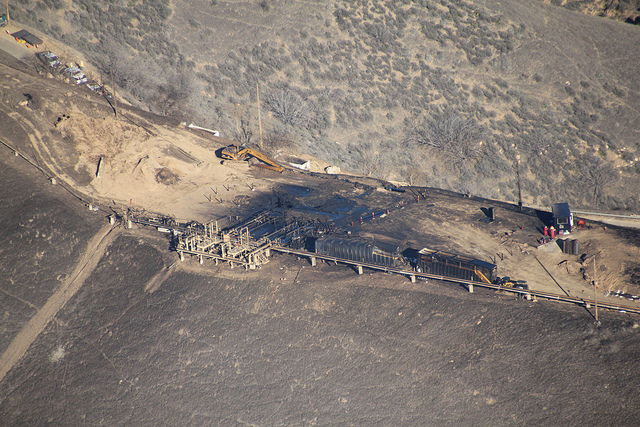

Methane, A Potent Planet-Warming Gas, Out of Control
“It is a methane disaster,” says Anthony Ingraffea, a civil and environmental engineer at Cornell University, in an interview on PRI. “When the final count of dollars and lives impacted is assessed, it will be similar to what we had in the Macondo [Deepwater Horizon] disaster in the Gulf of Mexico. … Luckily, at this point, no one has been killed. So in terms of deaths, it’s insignificant compared to Macondo. But in terms of environmental impact on the daily lives of thousands of people and cost, we’re talking about many, many, many billions, perhaps hundreds of billions of dollars when all is said and done here.”
Assuming methane’s global warming potential is 25 times that of CO2 (it is really up to 84 times), so far, the leak has generated as much greenhouse gases as driving a car more than 5 billion miles, or around the earth 200,866 times. — California Air Resources Board, EPA, Scientific Aviation
The leak resulted from the failure of one of the steel pipes, or casings, that line the well. The rupture allowed gas under very high pressure — roughly 2,700 pounds per inch or more — to escape and to make its way directly into the rock formation surrounding the well, Ingraffea explains.
“It found a path through the rock formation, through cracks, faults and joints and is escaping not from the surface at the well head, but from the surface away from the well head, literally out in a field,” he says.
The amount of methane (CH4) being released varies according to how it is measured and who is doing the measuring. According to Ingraffea, the leak has so far released about 120,000 total tons of natural gas, or about 1,200 tons of natural gas per day.
“That’s about one-quarter of the state of California’s monthly methane emissions from all sources,” he says. “Or, if you want to put it on a national basis, that’s about 15 percent of the hourly methane emissions in the entire oil and gas industry in the United States.”
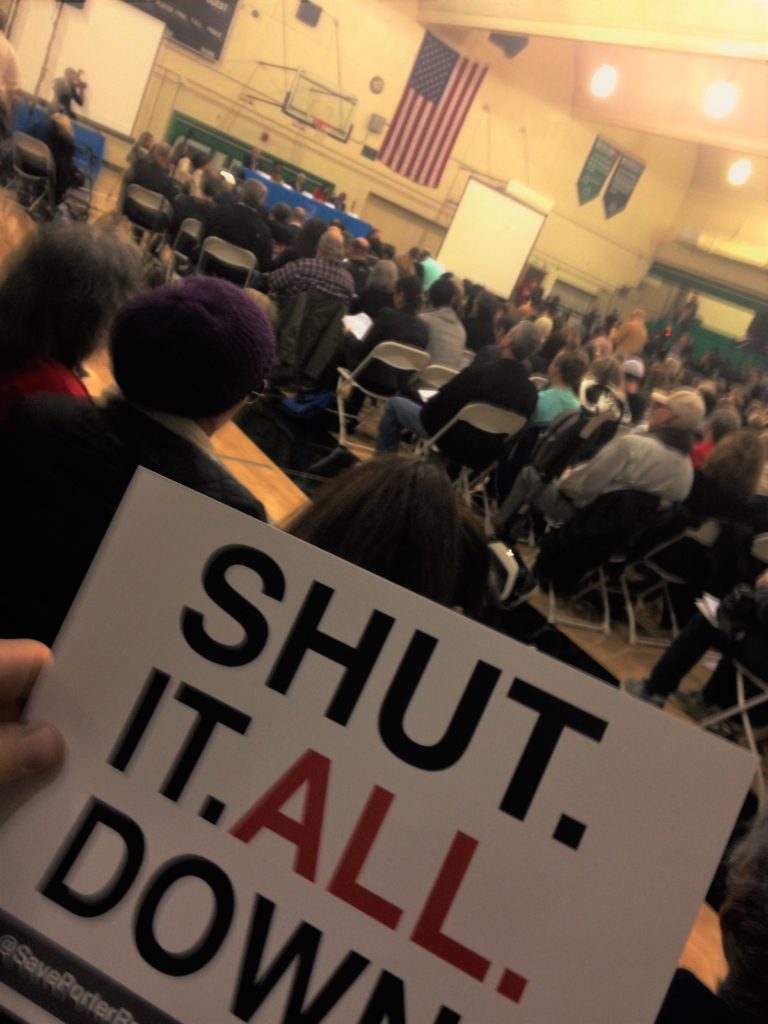

AQMD Undermined by State Utilities Commission
The AQMD Hearing Board engaged in a lengthy debate over whether a letter in which the executive director of the California Public Utilities Commission ordered SoCalGas to keep 15 billion cubic feet of natural gas in reserve at the facility undermined AQMD’s authority to shut down Aliso Canyon by requiring a complete draw-down of the storage facility.
Alexandra Nagy, Southern California Organizer with Food & Water Watch, said in a statement: “This move by the California Public Utilities Commission doesn’t protect the health and safety of residents of Porter Ranch and neighboring communities. It protects SoCalGas’ assets and it appears to violate Gov. Brown’s order to withdraw the maximum amount of gas from the field.”
“SoCalGas has been unwilling protect residents because to drain its facility would harm its bottom line. Absent consistent leadership from Gov. Brown, SoCalGas and the CPUC are working together to keep as much gas in reserve as possible, threatening residents with further exposure to toxic emissions. Gov. Brown needs to clarify his order and demand the drainage and permanent shutdown of the Aliso Canyon Storage Facility.”
The AQMD Hearing Board passed the Stipulated Order for Abatement instead of using its full authority to require SoCalGas to cease and desist operations at the Aliso Canyon Storage Facility by requiring the field to drawn down to the maximum extent possible.
https://youtu.be/5RfUB-sytC8
Governor Brown’s Executive Order also calls for a moratorium on gas injection at the Aliso Canyon Storage Facility “until a comprehensive review, utilizing independent experts, of the safety of the storage wells and the air quality of the surrounding community is completed.” This process has not been initiated, and residents are calling on Brown to make the moratorium on gas injections permanent.
More than 35,000 people have signed a petition circulated by Food & Water Watch calling for the shutdown of the Aliso Canyon Storage Facility.
President Obama: STOP the Porter Ranch Gas Blowout in California!
A noxious gas blowout has been raging for nearly three months in Porter Ranch, California. It’s making people sick with toxic chemicals like benzene and toluene and forcing them from their homes. SIGN THE PETITION!
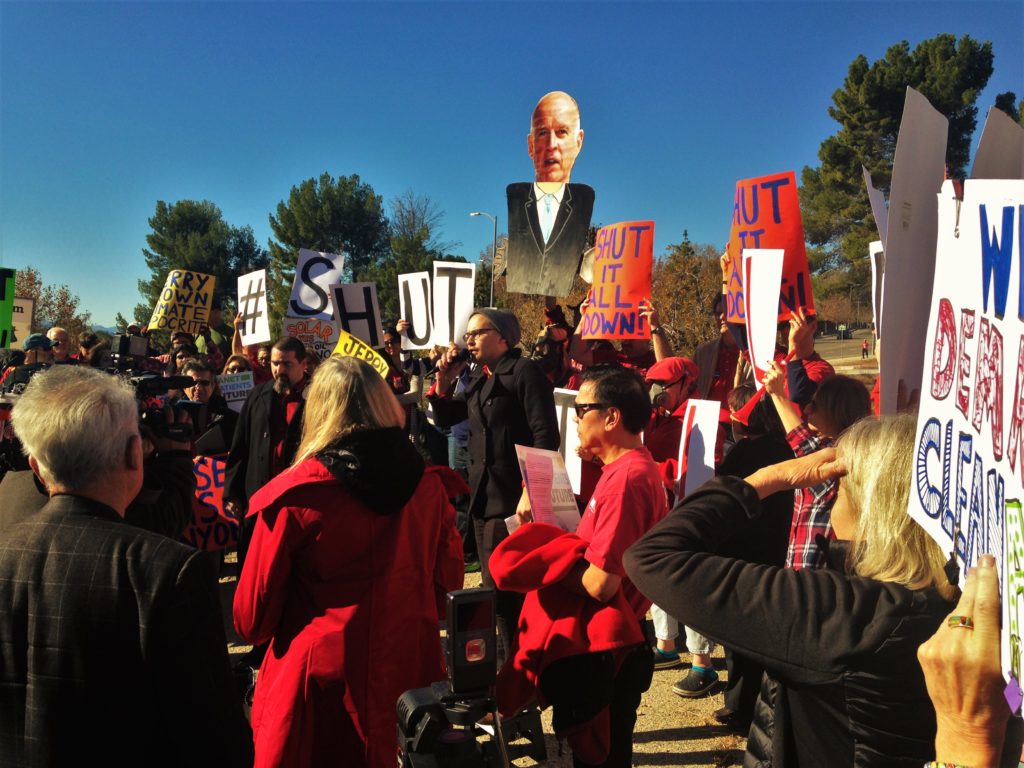

Dirty and Dangerous Natural Gas Is Not a Bridge Fuel to Address Climate Disruption
There are hundreds of natural gas storage facilities around the country, many of them aging and in danger of similar problems, Anthony Ingraffea says. Each storage facility has tens, sometimes hundreds, of wells of the type now leaking in Aliso Canyon. Most of these wells are over 60 years old and were never designed to last that long, Ingraffea says. They were designed to produce oil or gas for a few decades and then be plugged and taken out of service. But in the 1970s, many of the wells were repurposed as access wells to a storage reservoir.
“As Paul Simon used to say, ‘Everything put together sooner or later falls apart’ — especially if it’s underground,” Ingraffea says. “I have no doubt, given my professional experience, that the casing that ruptured experienced some corrosion. So, what we’re seeing here is what the industry knows: an increasing rate of such problems. So you can call this the proverbial tip of the iceberg, since there are tens of thousands of such wells.”
The climate-destroying debacle at Porter Ranch, said Presidential candidate Bernie Sanders, “is yet another reason why I have called for a ban on all fracking. Porter Ranch is simply one more tragic cautionary tale in our dependence on oil and gas.”
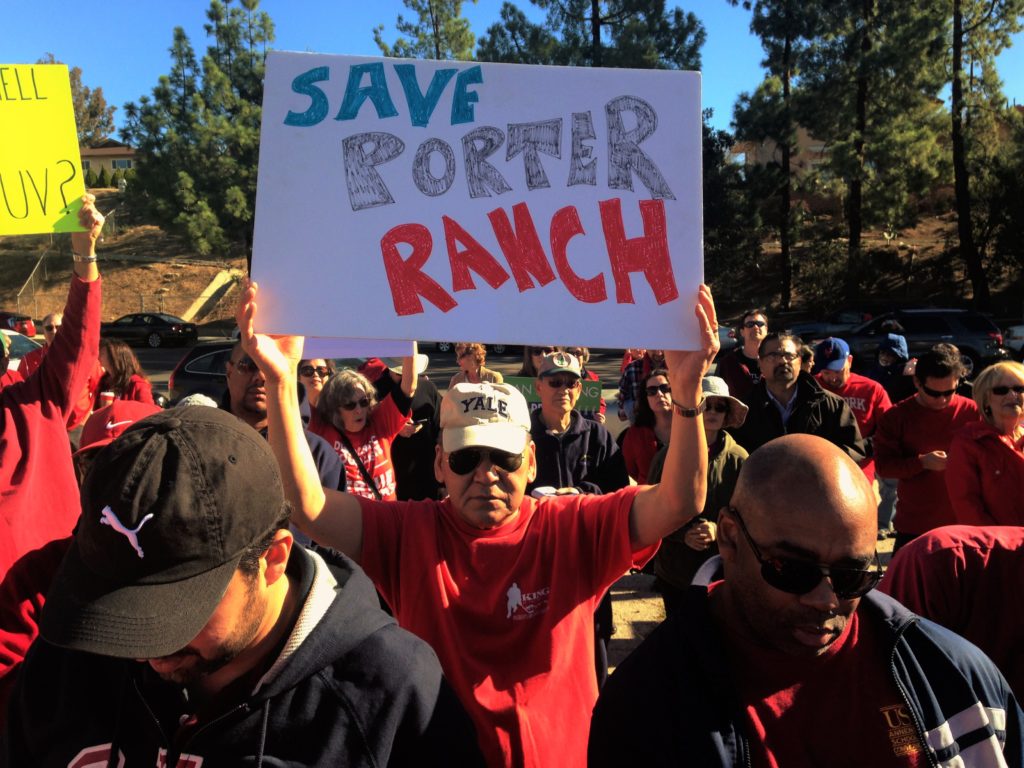

Ingraffea strongly disagrees with the argument that expanding natural gas production around the world will help address the threat of climate disruption.
“That’s an absolutely incorrect, unscientific assessment,” he insists. “All of the latest peer-reviewed scientific literature indicates that if the leakage of methane — natural gas — into the atmosphere worldwide is greater than about three percent of the total production of natural gas in the world, it’s the dirtiest of all fossil fuels.”
More than 60% of California’s electricity is produced by natural gas fired plants, which may provide advantages over coal, but factor in its use in transportation, home heating and appliances, and the leaks start to compound. All the peer-reviewed literature published in the last few years shows that in the US alone, the leak rate is greater than 3 percent, which is above the 1 percent industry declaration which the EPA accepts. In fact, researchers in Colorado, Utah, and the Los Angeles basin have recorded rates of 4, 11, and 17 percent respectively. Additionally, the equipment industry uses to record leakage rates has been found to be suspect.
Moreover, consider that newly uncovered documents show that hydraulic fracturing, or fracking, was “commonly used in the Aliso Canyon gas storage wells—including a well less than a half-mile from the leak,” wrote Center for Biological Diversity attorney Maya Golden-Krasner in an op-ed for the Sacramento Bee. “Despite the widespread use of this practice,” she wrote, “most Californians have no idea that gas storage wells near their homes are being fracked. That’s absolutely unacceptable and must end immediately.”
Ingraffea concluded in his PRI interview this way: “So, no, I do not in any way, means or form, ascribe to, believe or buy into the notion of natural gas being a bridge fuel or a down-ramp to a clean renewable energy future. It’s scientific nonsense. People in the industry know it. People in the scientific community know it. Unfortunately, our political leaders have to make decisions based on something other than science.”
President Obama, Governor Brown, it is time to Shut It All Down, permanently.
Jack Eidt is on the Steering Committee of SoCal 350 Climate Action, a Los Angeles affiliate of the international climate change organization 350.org.
Post Updated March 16, 2016

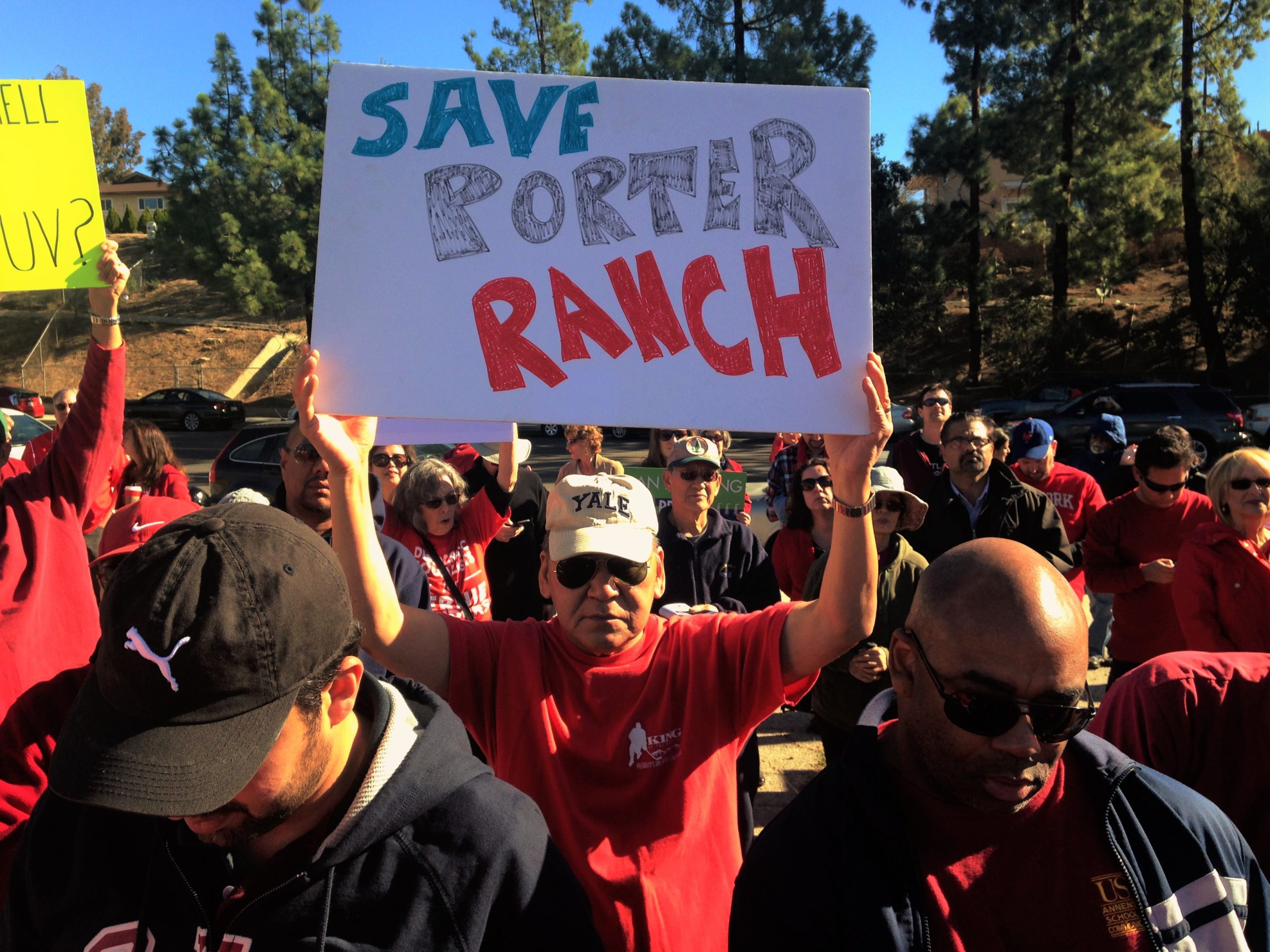





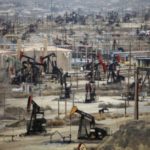






Pingback: Stopping West Coast Tar Sands Oil Bomb Trains in Their Tracks
Pingback: Stopping West Coast Tar Sands Oil Bomb Trains in Their Tracks | Energy News Corporation
Pingback: Tar Sands Oil "Bomb" Trains Proposed for California | WilderUtopia.com
Pingback: Stop the Madness: On Overcoming Bomb Trains and Sacrifice Zones in LA and Beyond - LA Progressive
Pingback: Eidt: Breaking Free from Fossil Fuels and the Refineries that Own our Air Quality Regulators | PETROCHEMICAL NEWS
Pingback: Breaking Free from Fossil Fuels and the Refineries that Own our Air Quality Regulators - LA Progressive
Pingback: Regulatory Agencies Must Break Free from Fossil Fuels | WilderUtopia.com